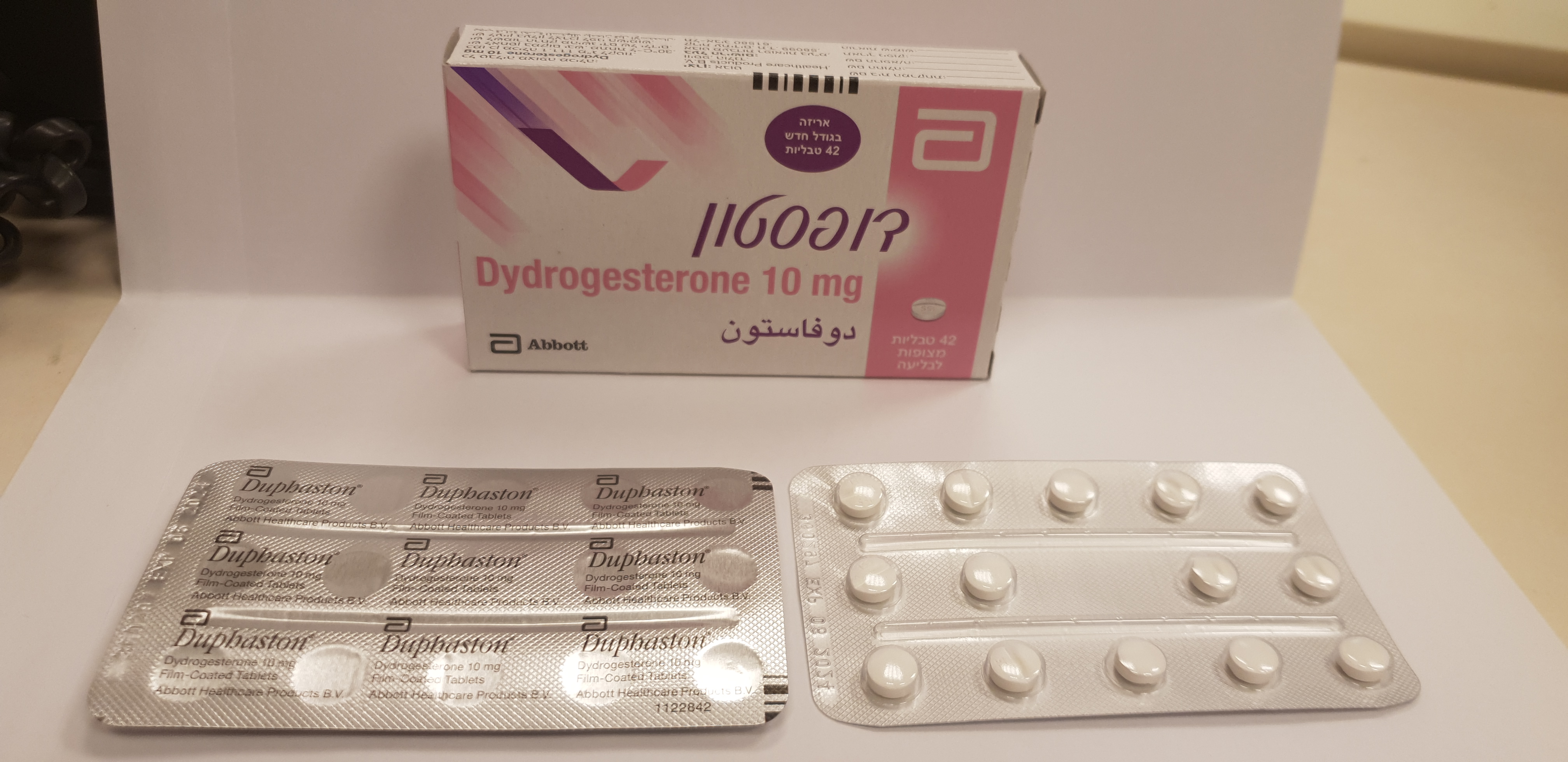Quest for the right Drug

דופסטון DUPHASTON (DYDROGESTERONE)
תרופה במרשם
תרופה בסל
נרקוטיקה
ציטוטוקסיקה
צורת מתן:
פומי : PER OS
צורת מינון:
טבליות מצופות פילם : FILM COATED TABLETS
עלון לרופא
מינוניםPosology התוויות
Indications תופעות לוואי
Adverse reactions התוויות נגד
Contraindications אינטראקציות
Interactions מינון יתר
Overdose הריון/הנקה
Pregnancy & Lactation אוכלוסיות מיוחדות
Special populations תכונות פרמקולוגיות
Pharmacological properties מידע רוקחי
Pharmaceutical particulars אזהרת שימוש
Special Warning עלון לרופא
Physicians Leaflet
Pharmacological properties : תכונות פרמקולוגיות
Pharmacodynamic Properties
5.1 Pharmacodynamic properties Pharmacotherapeutic category: urogenital system and sex hormones, ATC code: G03DB01 Mechanism of action Dydrogesterone is a synthetic progesterone with an oral biological availability that causes a secretory phase of the endometrium in a uterus prepared by oestrogen. It gives protection against the increased risk of endometrial hyperplasia and/or endometrial carcinoma that is induced by oestrogens. Dydrogeserone has no oestrogenic, androgenic, anabolic and corticoid properties. Dydrogesterone does not suppress ovulation. As a result, conception remains possible if dydrogesterone is used by women of child-bearing age. In postmenopausal women with a uterus, oestrogen replacement leads to an increase in the risk of endometrial hyperplasia and endometrial carcinoma. The addition of a progestogen prevents this additonal risk. Clinical efficacy and safety Luteal support as part of an Assisted Reproductive Technology (ART) treatment: A Double-Blind, Double-Dummy, Randomized, Two-arm, Multicentre Study Comparing the Efficacy, Safety, and Tolerability of Oral Dydrogesterone 30 mg daily versus Intravaginal Micronized Progesterone Capsules 600 mg daily for Luteal Support in In-Vitro Fertilization (LOTUS I) The study achieved its primary objective of demonstrating non-inferiority of oral dydrogesterone compared to intravaginal micronized progesterone in terms of the presence of fetal heartbeats at 12 weeks’ gestation (week 10). In the studied patient population, pregnancy rates at 12 weeks’ gestation (week 10) were 37.6% and 33.1% in the dydrogesterone and micronized progesterone groups, respectively. The difference in the pregnancy rate between the two groups was 4.7 (95% CI, -1.2; 10.6). Within the safety sample of 1,029 subjects with at least one dose of study medication administered, the incidence of the most frequently reported TEAEs was similar between the two treatment groups. Due to the nature of the indication and the studied patient population, a number of early abortions and miscarriages can be expected. Especially until 12 weeks’ gestation (pregnancy week 10), the expected pregnancy rate is about 35%. The safety profile observed in this study is in line with the profile as known for dydrogesterone for the treatment target population and indication.
Pharmacokinetic Properties
5.2 Pharmacokinetic properties Absorption After oral administration dydrogesterone is rapidly absorbed with a Tmax of between 0.5 and 2.5 hours. The absolute biological availability of dydrogesterone (20 mg oral dose versus 7.8 mg intravenous infusion) is 28%. The following tables gives the pharmacokinetic parameters of dydrogesterone (D) and 20α- dihydrodydrogesterone (DHD) after administration of a single dose of 10 mg dydrogesterone: D DHD Cmax (ng/mL) 2.1 53.0 AUCinf (ng·h/mL) 7.7 322.0 Distribution After intravenous administration of dydrogesterone the steady-state distribution volume is around 1400 l. More than 90% of dydrogesterone and DHD are bound to plasma-proteins. Metabolism After oral administration dydrgesterone is metabolized quickly to DHD. In vitro data show that the main route of metabolism, the one that generates DHD, is catalyzed in human cytosol by aldo-keto reductase 1C (AKR 1C). Next to this cystolic metabolism, other metabolic routes by cytochrome P450 iso enzymes (CYPs) exist, this is nearly exclusively CYP 3A4, in which less important metabolites are formed. The concentration of the main active metabolite DHD shows a peak concentration approximately 1.5 hours after administration. The plasma concentrations of DHD are substantially higher than the related drug. The AUC and Cmax ratios of DHD and dydrogesterone are approximately 40 and 25. The mean terminal half-life of dydrogesterone and DHD varies from 5-7 and 14-17 hours respectively. A common feature of all characterized metabolites is the maintenance of the 4,6-diene-3-on configuration of the initial drug and the missing 17a-hydroxylation. This clarifies the lack of estrogen and androgen effects of dydrogesterone. Elimination After oral administration of labelled dydrogesterone on average 63% of the dose is excreted in the urine. The total plasma clearance is 6.4 l/minute. Within 72 hours the excretion is complete, DHD is present in the urine, mainly as the conjugated glucuronic acid. Dependence of dose and time The pharmacokinetics of single and multiple doses are linear in the oral dosage range from 2.5 to 10 mg. Comparison of the kinetics of single and multiple doses shows that the pharmacokinetics of dydrogesterone and DHD do not change as a result of repeated dosing. Steady state is reached after 3 days of treatment.

שימוש לפי פנקס קופ''ח כללית 1994
Dysmenorrhea, endometriosis, irregular cycles, dysfunctional uterine bleeding, secondary amenorrhea, habitual abortion
תאריך הכללה מקורי בסל
01/01/1995
הגבלות
תרופה שאושרה לשימוש כללי בקופ'ח
מידע נוסף
